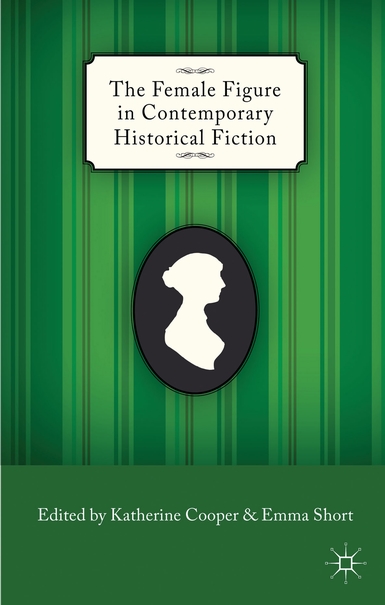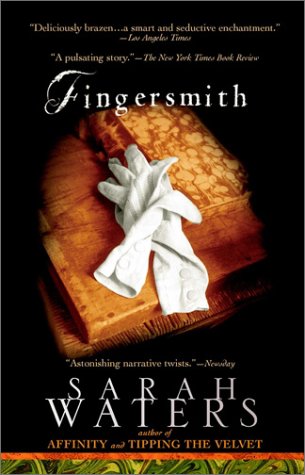Muller, Nadine, ‘Sexual F(r)ictions: Pornography in Neo-Victorian Women’s Fiction’, The Female Figure in Contemporary Historical Fiction, ed. by Katherine Cooper and Emma Short (Basingstoke: Palgrave Macmillan, 2012), pp. 115-133
To see the full table of contents for the essay collection and/or to order a copy, please click here. If you would like a pdf copy of my chapter, please email me.
Introduction
 Since the first decades of the twentieth century and the publication of Lytton Strachey’s Eminent Victorians (1918), through to the 1960s and Steven Marcus’s The Other Victorians: A Study of Sexuality and Pornography in Mid-Nineteenth-Century Victorian England (1964), the nineteenth century has been (re)defined according to its sexual politics, not least in order to contrast perceived Victorian conservativeness with later generations’ sense of their own modernity. At the turn of the new millennium, neo-Victorian fiction, through its compulsive return to matters of sex and gender, continues this sexualization of the past, a phenomenon which Marie-Luise Kohlke has termed the ‘neo-Victorian sexsation,’ and which, as in previous decades, still frequently serves to ‘conveniently reassert our own supposedly enlightened stance towards sexuality and social progress’ by sexually ‘liberating’ the past and its fictional heroines.[i]
Since the first decades of the twentieth century and the publication of Lytton Strachey’s Eminent Victorians (1918), through to the 1960s and Steven Marcus’s The Other Victorians: A Study of Sexuality and Pornography in Mid-Nineteenth-Century Victorian England (1964), the nineteenth century has been (re)defined according to its sexual politics, not least in order to contrast perceived Victorian conservativeness with later generations’ sense of their own modernity. At the turn of the new millennium, neo-Victorian fiction, through its compulsive return to matters of sex and gender, continues this sexualization of the past, a phenomenon which Marie-Luise Kohlke has termed the ‘neo-Victorian sexsation,’ and which, as in previous decades, still frequently serves to ‘conveniently reassert our own supposedly enlightened stance towards sexuality and social progress’ by sexually ‘liberating’ the past and its fictional heroines.[i]
B elinda Starling’s The Journal of Dora Damage (2006) and Sarah Waters’s Fingersmith (2002) not only vividly re-imagine the pornography trade during the second half of the nineteenth century but, adding to their sexsationalism, they also centre around their heroines’ encounters with and creation of pornographic works, thus exploring women’s roles in the male-dominated marketplace in which these publications were and have since been created and circulated. This chapter seeks to contextualize Starling’s and Waters’s representations of the relationships between women and pornography within contemporary debates surrounding ‘a pornographic marketplace [which] is now almost as eager to address women as desiring consumers as it once was to package them merely as objects of consumption’.[ii] Within this marketplace, women’s positions explode and blur the supposedly mutually exclusive roles of victim, accomplice and emancipated sexual agent which various feminist factions have established for them; roles which – with few exceptions – have been founded upon specific assumptions regarding the relationship between reality and cultural production. In other words, such roles rely upon the notion that pornography – as a cultural product, textual, artistic, photographic or filmic – either creates or represents society and its gender relations, most notably violence toward and the oppression of women.
elinda Starling’s The Journal of Dora Damage (2006) and Sarah Waters’s Fingersmith (2002) not only vividly re-imagine the pornography trade during the second half of the nineteenth century but, adding to their sexsationalism, they also centre around their heroines’ encounters with and creation of pornographic works, thus exploring women’s roles in the male-dominated marketplace in which these publications were and have since been created and circulated. This chapter seeks to contextualize Starling’s and Waters’s representations of the relationships between women and pornography within contemporary debates surrounding ‘a pornographic marketplace [which] is now almost as eager to address women as desiring consumers as it once was to package them merely as objects of consumption’.[ii] Within this marketplace, women’s positions explode and blur the supposedly mutually exclusive roles of victim, accomplice and emancipated sexual agent which various feminist factions have established for them; roles which – with few exceptions – have been founded upon specific assumptions regarding the relationship between reality and cultural production. In other words, such roles rely upon the notion that pornography – as a cultural product, textual, artistic, photographic or filmic – either creates or represents society and its gender relations, most notably violence toward and the oppression of women.
 However, more recently scholars of media, gender, feminist and popular culture studies have suggested that an effective analysis of pornography, its status in the marketplace and its influence on society, requires such dichotomies to be cast aside, not least because, as Simon Hardy observes, postmodern theories have long begun to illustrate the fragile nature of the category of the ‘real’ which lies at the heart of the creation/representation debate.[iii] Consequently, in order to acknowledge and discuss the complexities of the ‘mainstreaming [of] sex’ – and, within that context, pornography – we must develop new approaches to ‘forms of sexualization which may be profoundly contradictory in the way they blend oppressive and emancipatory views of sex and gender’, including the development of ‘a critical language for the analysis of sexualization without reverting to “pro” and “anti” positions on pornography’.[iv] Contrary to Christian
However, more recently scholars of media, gender, feminist and popular culture studies have suggested that an effective analysis of pornography, its status in the marketplace and its influence on society, requires such dichotomies to be cast aside, not least because, as Simon Hardy observes, postmodern theories have long begun to illustrate the fragile nature of the category of the ‘real’ which lies at the heart of the creation/representation debate.[iii] Consequently, in order to acknowledge and discuss the complexities of the ‘mainstreaming [of] sex’ – and, within that context, pornography – we must develop new approaches to ‘forms of sexualization which may be profoundly contradictory in the way they blend oppressive and emancipatory views of sex and gender’, including the development of ‘a critical language for the analysis of sexualization without reverting to “pro” and “anti” positions on pornography’.[iv] Contrary to Christian
Gutleben’s argument that much neo-Victorian fiction is ‘bereft of any narrational or diegetic consideration about the present situation’ and ‘[feels] exempt from any other political responsibility’ than the superficial rectification of historical wrongs and absences,[v] this chapter argues that, by placing their heroines in the period in which the production and distribution of pornographic works first became an industry, Fingersmith and The Journal of Dora Damage investigate pornography as a contemporary feminist issue, and explore women’s increasingly complex relationships to and roles within it. However, in doing so, Starling’s and Waters’s representations of their heroines’ sexual experiences and of their encounters with sexually explicit material also raise questions concerning the authors’ own novels’ sexsationalism, and the extent to which their narratives function as contributions and/or challenges to the neo-Victorian sexsation and our readerly consumption of it.
[i] Marie-Luise Kohlke, ‘The Neo-Victorian Sexsation: Literary Excursions into the Nineteenth Century Erotic’, in Probing the Problematics: Sex and Sexuality, ed. by Marie-Luise Kohlke and Luisa Orza (Oxford: Inter-Disciplinary Press, 2008), pp. 345-56 (p. 345).
[ii] Lynne Segal, ‘Only the Literal: The Contradictions Anti-Pornography Feminism’, in More Dirty Looks: Gender, Pornography and Power, ed. by Pamela Church Gibson (London: BFI Publishing, 2004), pp. 59-70 (p. 60).
[iii] Simon Hardy, ‘The New Pornographies: Representation or Reality’, in Mainstreaming Sex: The Sexualization of Western Culture, ed. by Feona Attwood (London: I.B. Tauris, 2009), pp. 3-18 (p. 3).
[iv] Feona Attwood, ‘Introduction: The Sexualization of Culture’, in Mainstreaming Sex: The Sexualization of Western Culture, ed. by Feona Attwood (London: I.B. Tauris, 2009), pp. xiii-xxiv (p. xiii and xviii).
[v] Christian Gutleben, Nostalgic Postmodernism: The Victorian Tradition and the Contemporary British Novel (Amsterdam & New York: Rodopi, 2001), p. 169.